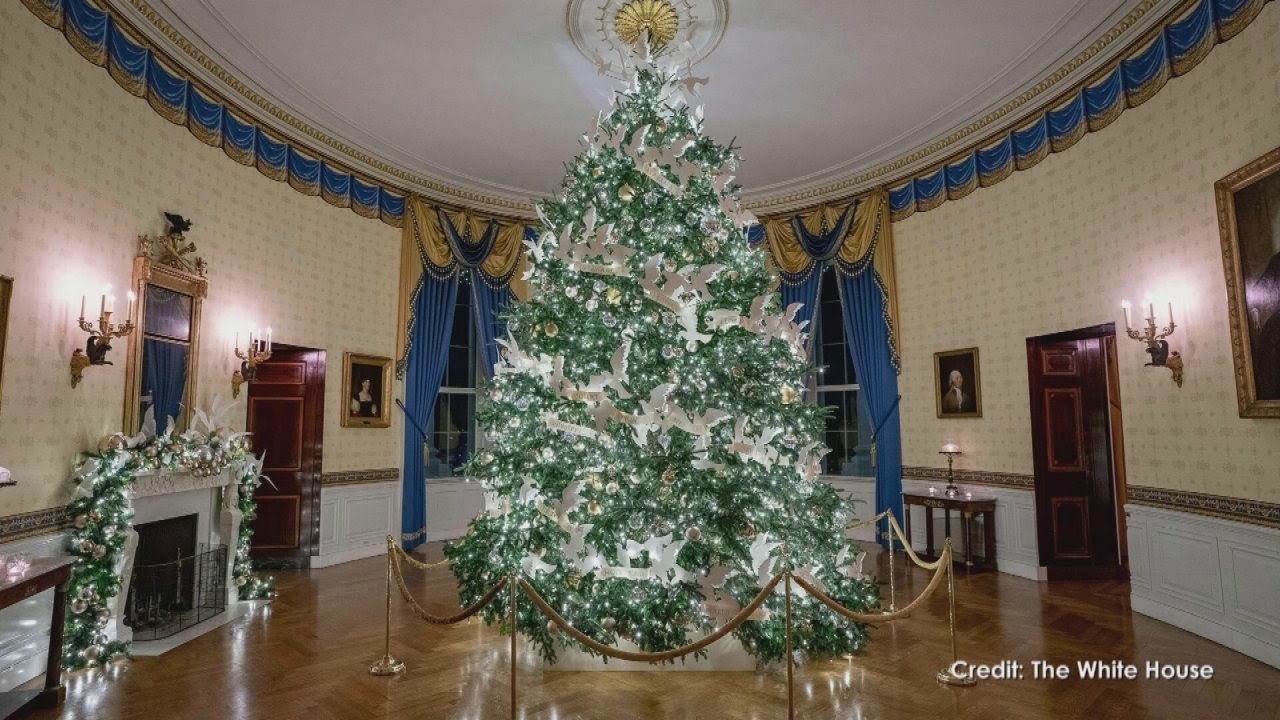The holiday season at the White House is no ordinary affair; it’s a meticulously orchestrated spectacle that demands months of planning and hard work from the dedicated staff that serves the president and his family. While many individuals are enjoying the festive season, the White House team is immersed in the intricate preparation of decorations, events, and festivities that will captivate the first family and over 100,000 visitors attending various gatherings, receptions, public tours, and open houses.
In the early days of the White House, the residential staff adorned rooms with cedar and holly, prepared feasts featuring cakes and punch, and kindled fires to ward off the winter chill. Today, their modern counterparts undertake a much grander task—planning and executing lavish holiday festivals with world-class decorative arts, confections, flowers, and lighting.
The laborious process kicks off as early as February when design concepts are presented to the first lady for approval. These decisions set the stage for thousands of decorations and ornaments that will adorn the White House, from the majestic Christmas tree in the Blue Room to every public room in its vicinity.
The tradition of thematic decorations took root with Jacqueline Kennedy in 1961 when she organized the “Nutcracker Suite.” Since then, first ladies have embraced various themes, celebrating early Americana, handmade crafts, Victorian toys, needlepoint, children’s nursery rhymes and books, service members, and American treasures.
Once the theme is chosen, the chief usher collaborates closely with the first lady to oversee months of preparations. A team of carpenters, plumbers, electricians, florists, cooks, and pastry chefs work tirelessly. Early orders for ribbons and materials are placed, and craftspeople begin crafting thematic ornaments using a variety of materials such as natural plant materials, paper, fiber, ceramics, metal, and wood.
The holiday baking extravaganza begins as early as June, with thousands of cookies made from chocolate, glazed fruits, maple sugar, coconut, and freshly ground spices. The pastry chefs also craft marzipan and sugar decorations, including Santas, presidential pets, teddy bears, and snowmen, which are adorned with colorful hats and scarves.
Every detail matters throughout the decorative process—considerations range from the color of lights in each room to how flowers coordinate with the furniture, and even the precise sizing of bows and choice of ribbon colors. The floral staff, aided by volunteer florists from across the country, weaves handmade garlands, places berries on fresh wreaths, and assembles ornamental arrangements for the East Room. Mistletoe is meticulously tied with ribbon, and wreaths are carefully prepared to hang in front of gilded mirrors.
In the kitchen, attention turns to crafting the gingerbread house displayed in the State Dining Room. What began as a simple A-frame design under Patricia Nixon has evolved into a sugary showpiece drawn from blueprints and historic photographs, complete with to-scale windows and doors. This year’s gingerbread house weighed over 300 pounds and required 80 sheets of dough, 90 pounds of sugar paste, 30 pounds of chocolate, and 50 pounds of royal icing.
The entire process is a labor of love, ensuring that the White House shines brightly during the holiday season, a symbol of festive spirit, tradition, and the collective effort of a dedicated team.
